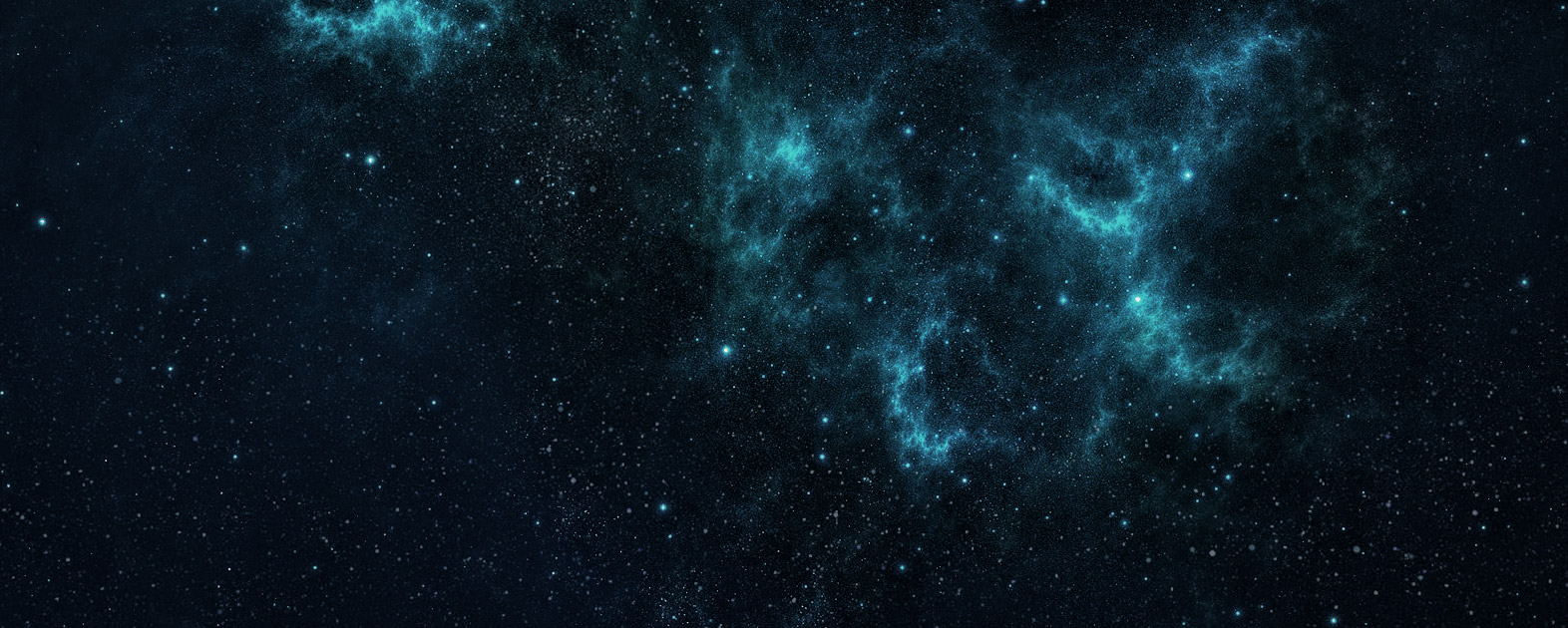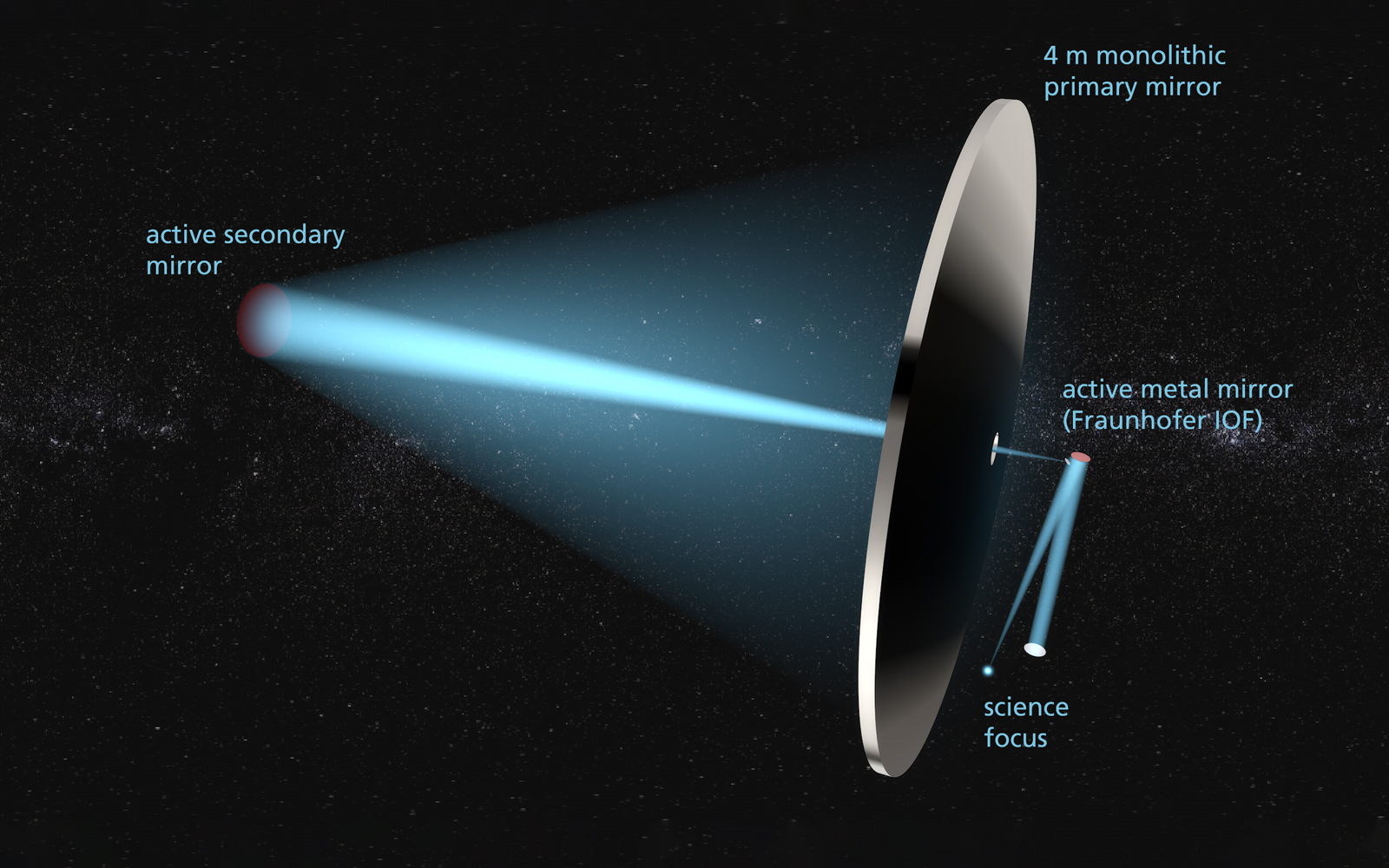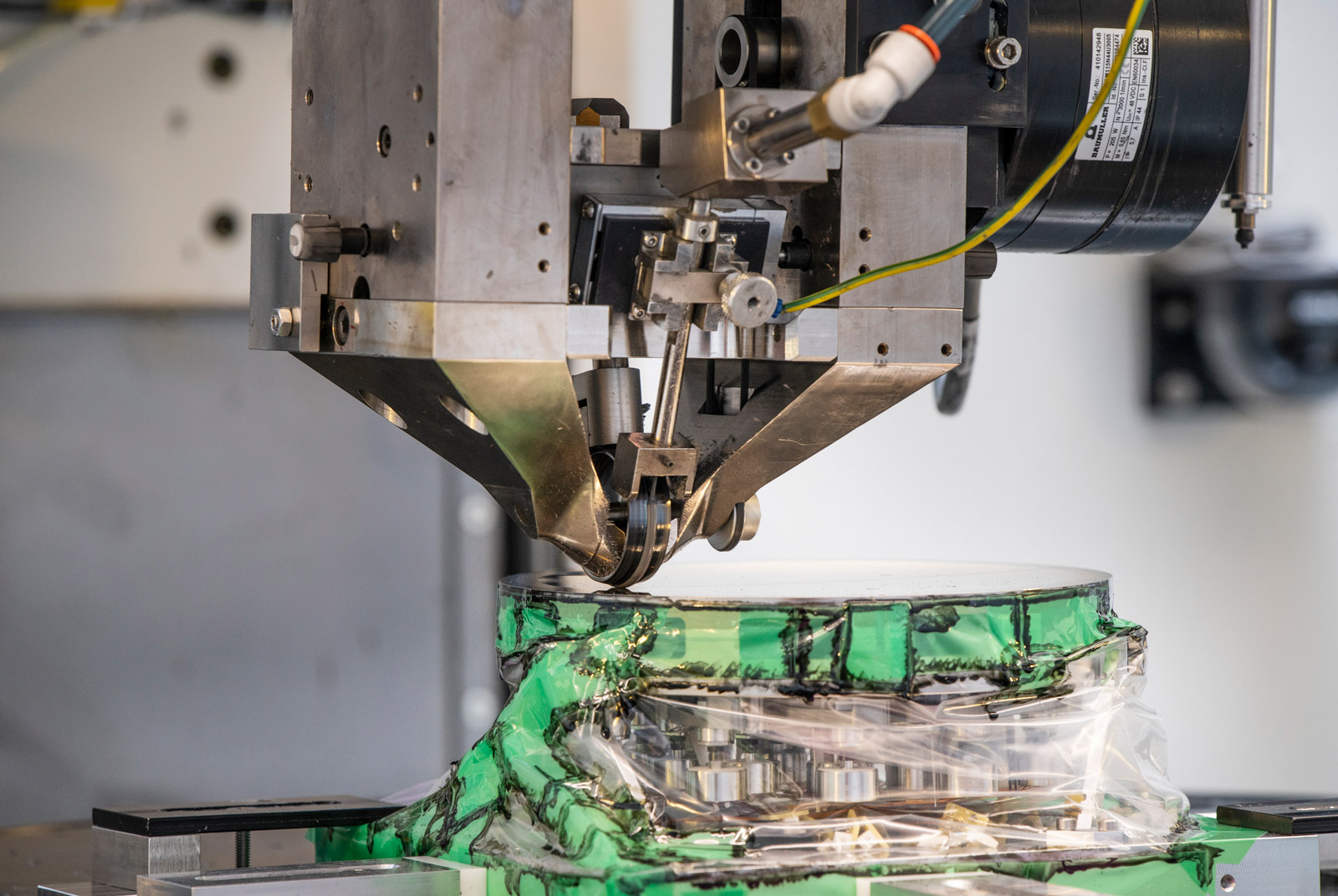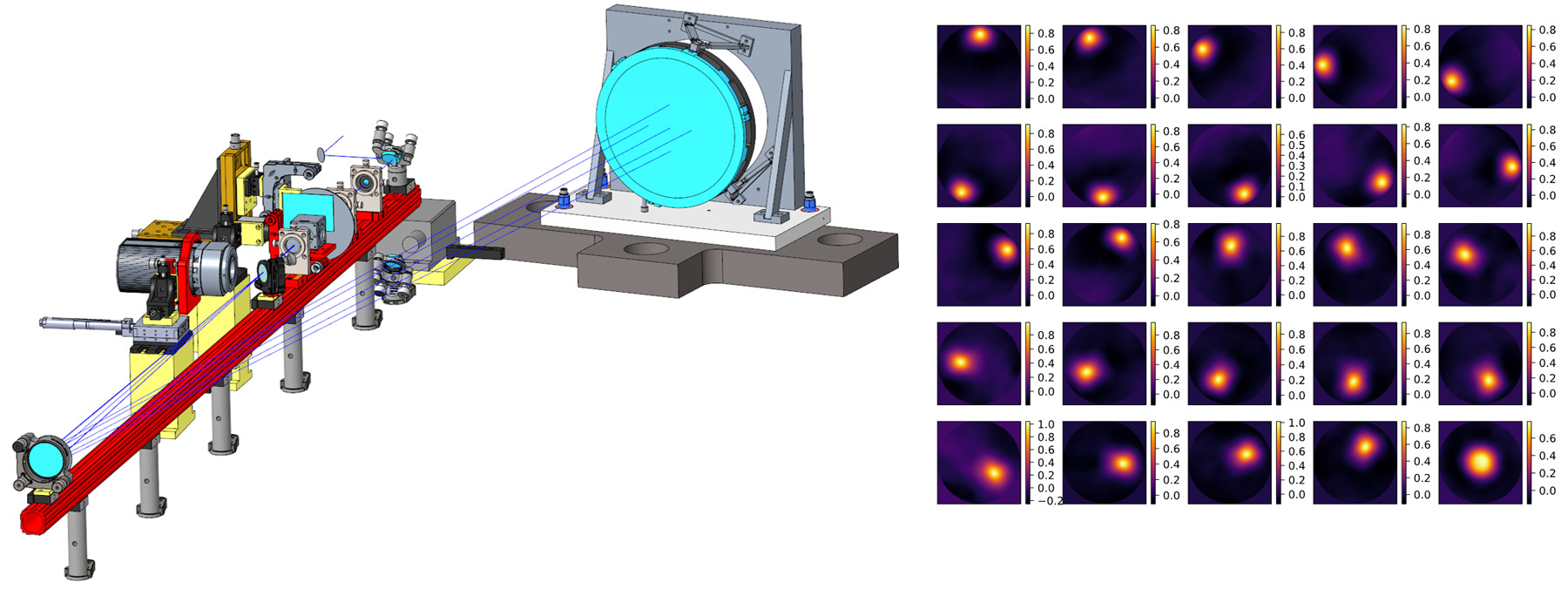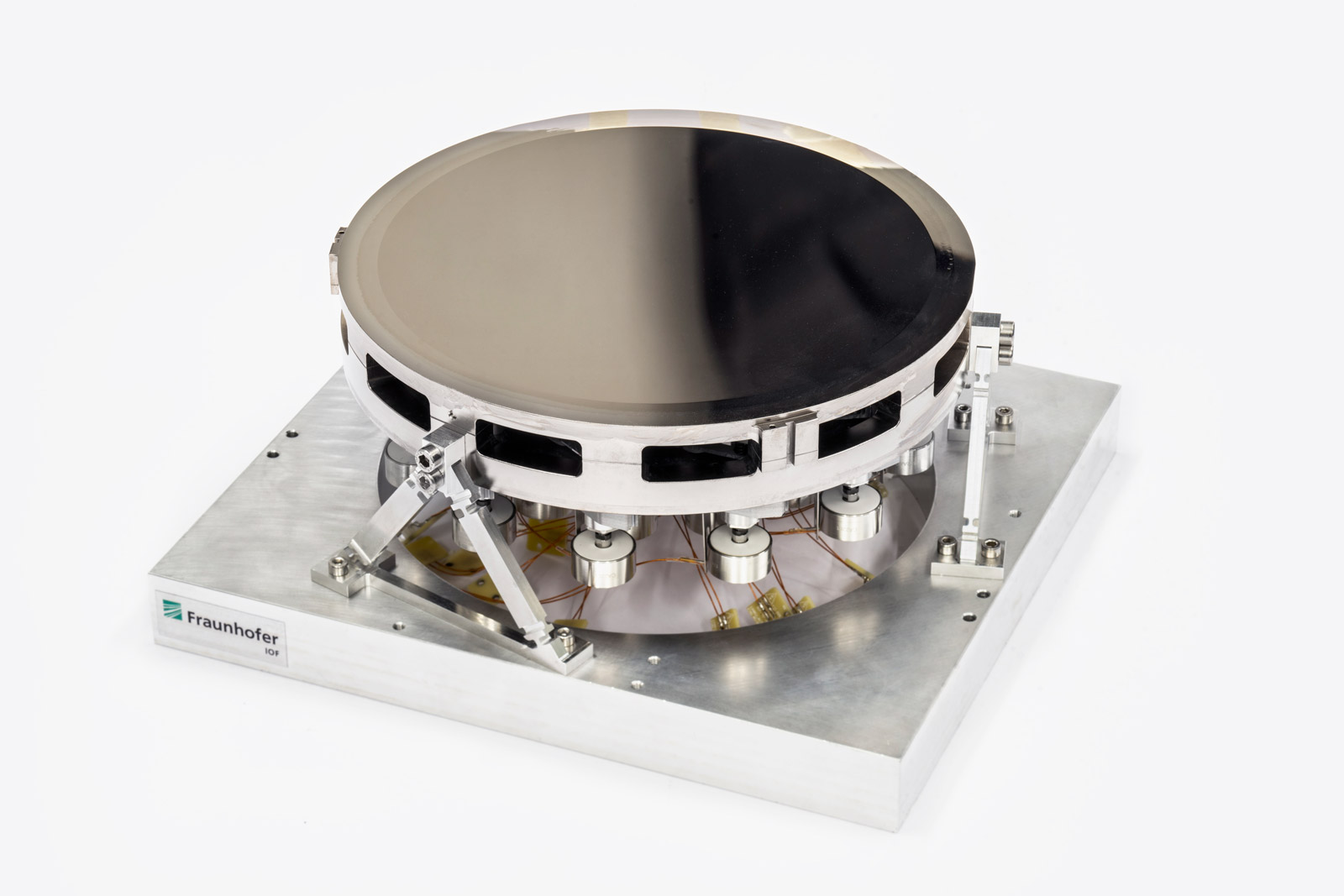Motivation
Next generation UVOIR space telescopes with primary mirrors larger than four meters are forecasted to answer important questions in astronomy. However, these instruments are exposed to harsh environmental conditions in launch and operation and their optical quality will consequently decrease. An active optical correction chain can measure and compensate for aberrations within the telescope using wave front sensing and deformable mirrors.
